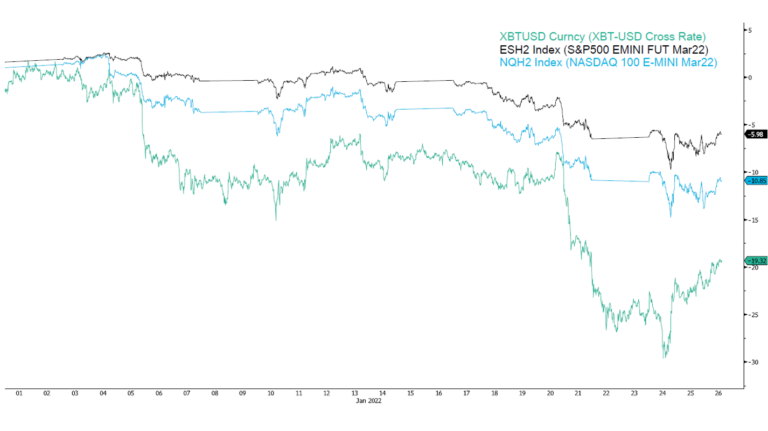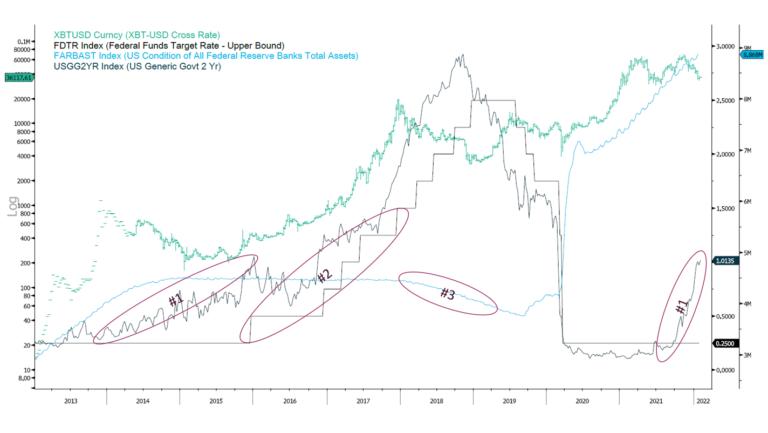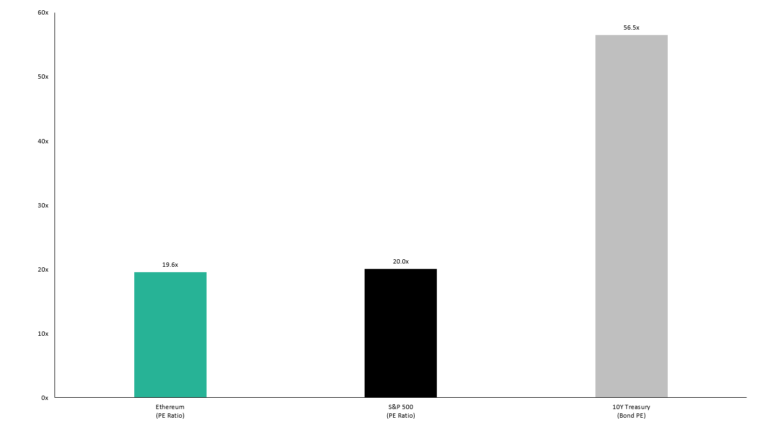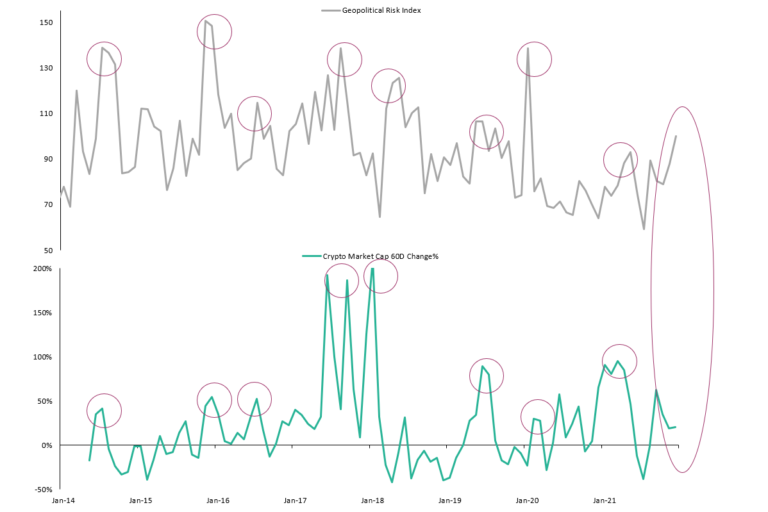Last Updated: 1/26/2022 | 11 min. read
Major risk markets have had a messy start to the year as the turbulent macro environment has been front and center for investors. Macro risks have taken the broader S&P 500, the Web 2.0 tech-heavy NASDAQ 100, and Web 3.0 crypto market all lower on the year by ~6%, ~11%, and ~19%, respectively (Figure 1). During Monday’s lows, the S&P 500 reached the ~10% correction that some strategists were calling for, while Bitcoin touched just below 50% down from its all time highs before markets bounced. While it’s hard to know where prices will go over the short to medium-term, we think the same factors that have taken markets down could offer signs of long-term opportunity for investors:
FIGURE 1: PRICE: BITCOIN, S&P 500 E-MINI FUTURES & NASDAQ 100 E-MINI FUTURES

Source: Bloomberg, Date: 1/1/22 to 1/26/22
Stepping back and looking at the previous Fed tightening and its impact on Bitcoin cycles might offer clues as to how this round of monetary tightening may impact crypto markets going forward. When comparing rate expectations (US 2 year treasury proxy), the Fed funds target rate, and the Fed balance sheet during the 2013-2018 tightening to the prior two Bitcoin cycles, a few trends emerge (Figure 2):
The prior and current cycle dynamics have similarities that suggest crypto markets may be going through a similar adjustment phase, just at a faster pace given the speed and shape of the pandemic recovery vs. the prior economic expansion, which was the longest in 75+ years.
Looking at US 2 year treasury rates, markets have been pricing in a lift off (the first Fed rate hike) more aggressively since Q4 2021, which has coincided with the recent crypto drawdown, but rates are now close to where they stood during December 2015 when the prior Bitcoin rally started. The question markets are grappling with remains: will the Fed be more aggressive this cycle or will markets overshoot expectations? It’s hard to say. But, looking at the current market outlook, Goldman, for example, is calling for four hikes this year starting in March, and expects the Fed to start cutting its balance sheet in July, but sees a risk of additional hikes.
Using the consensus outlook for the first Fed rate hike in March— and assuming the prior cycle as a framework— it may imply crypto could be close to finding a bottom before the expected lift off in two months. Assuming the Fed does not give the market a more hawkish surprise out of the January meeting, and markets follow a similar path to the prior cycle, crypto could have room to rally. Using Goldmans’ expectations for a July balance sheet reduction and four hikes this year, that would give crypto investors until the end of Q2 without the Fed acting as an overhang on the market (again, assuming the prior cycle as a framework and markets don’t get a hawkish surprise to consensus).
Risks to the downside would include a more aggressive rate hike cycle, balance sheet reduction strategy, or Fed policy communication mistake. Markets can tend to overshoot both ways, and there’s a long time between now and July, which leaves a lot of data that could change the Fed’s outlook. But, on-balance, we believe there are reasons for crypto investors to be optimistic about the monetary policy environment outlook, especially if inflation subsides.
FIGURE 2: BITCOIN PRICE (LHS), FED FUNDS UPPER TARGET RATE (RHS 1), US GOVT 2-YEAR YIELD (RHS 1), & FED TOTAL ASSETS (RHS 2)

Source: Bloomberg, Date: 1/1/13 to 1/24/22
Regardless of Fed policy action, we think opportunities still exist to buy attractive crypto assets, with strong growth prospects and network effects, at compelling valuations, for a few reasons:
FIGURE 3: ETHEREUM & S&P 500 PE VS. 10Y BOND PE (INVERSE YIELD)

Source: Bloomberg (Consensus Estimated), Token Terminal (Annualized PE), Date: 1/24/22
The deployment of Russian forces to the Ukrainian border has put NATO members and global investors on high alert while geopolitical risks with China and Taiwan have been in focus for investors over recent months. While crypto typically behaves as a risk-on asset, it has also benefited historically from rising geopolitical risks (Figure 4).
FIGURE 4: CRYPTO MARKET CAP 60D CHANGE% & GEOPOLITICAL RISK INDEX

Source: Tradingview, Economic Policy Uncertainty, Date: 1/1/14 to 1/24/22
We see crypto innovation continuing to accelerate and believe the asset class remains in its early innings. Volatility can be challenging in any market, but many crypto investors are accustomed to swift price movements and have learned to search for opportunities when they occur. At current levels, Bitcoin is sitting ~45% off it’s all time high while other crypto assets have fallen to even deeper discounts. Historically, adding crypto exposure when prices retreat 55% to 85% from highs has been a strong strategy for investors with a long term horizon. During the December 2013 to January 2015, December 2017 to December 2018, and April 2021 to July 2021 correction Bitcoin fell by 85%, 84%, and 54%, respectively. Following each of these historical drawdowns, innovation and adoption continued, and markets eventually recovered. While timing the market is difficult, there are monetary, fundamental, and geopolitical data points that offer encouraging signs and we believe opportunity continues to exist for crypto investors with a long term horizon.